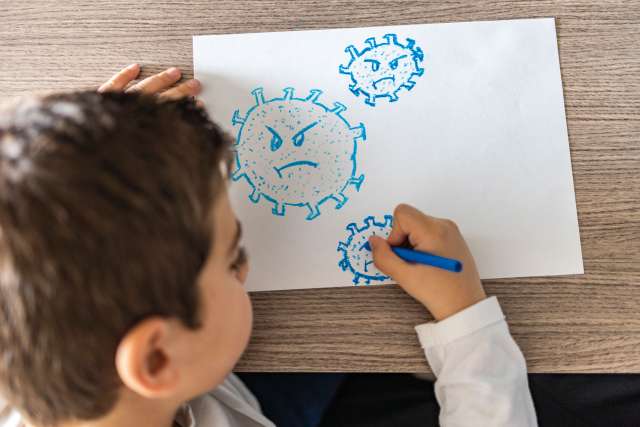Although less common than in adults, children can experience long COVID-19, too, leading to difficulties with thinking, concentrating, playing sports or participating in their usual activities. “It is important for parents to be aware this is a real syndrome in children, and they should be on the lookout for it if their child has COVID,” says Annabelle de St. Maurice, MD, MPH, associate professor of pediatrics and infectious diseases.
Researchers are still studying the risk factors for long COVID in children, but Dr. de St. Maurice notes that those who have been hospitalized or had more severe cases appear to be at greater risk. “Getting their child vaccinated is one of the best ways to protect against severe COVID and COVID infection,” she says. “Fortunately, the vaccines are available for the youngest children now.”
Long COVID, which is defined as symptoms that last more than four weeks after infection, can persist for weeks, months or years. Symptoms can also come and go. Children may experience prolonged fatigue, brain fog, headaches, shortness of breath, rapid heart rate or pain in the muscles or joints, Dr. de St. Maurice says. “We know infection itself triggers some of these symptoms, such as fatigue or shortness of breath, but if it lasts four weeks or more, that’s sufficient for concern,” she says, adding that parents should then consult their child’s pediatrician.
Long COVID in children can result in more absences from school or a need for special education services. The American Academy of Pediatrics says that children dealing with postCOVID symptoms should not be penalized for symptoms that affect learning or completion of assignments. For instance, the group notes that brain fog may result in inattentiveness, slower reading or processing and the need for more repetition.
Parents should talk to teachers about any additional support children with long COVID may need, Dr. de St. Maurice says. “If they’re having difficulty concentrating, parents should alert teachers to provide special modifications to their schedules or homework assignments. If the child has problems with exercise, that would be something to advise their physical education teachers and anyone who might be monitoring recess about,” she says.
While long COVID appears less common in children than adults, it’s also difficult to determine the number of children affected. For instance, children, especially younger ones, may have difficulty describing their symptoms, Dr. de St. Maurice says. That could also explain why research has suggested that older children and teens are more likely to have post-infection symptoms than younger kids.
Additionally, Dr. de St. Maurice says there’s commonality between some mental health symptoms that have been brought on by the isolation of the pandemic and symptoms associated with long COVID. “We know that people who have depression may be more tired and might have less energy than individuals without depression,” she says. “There’s some overlap in the symptoms.”
Children may experience prolonged fatigue, brain fog, headaches, shortness of breath, rapid heart rate or pain in the muscles or joints, Dr. de St. Maurice says.
Vaccination to both prevent infection and reduce severity of illness is available to children 6 months of age and older and is the best measure for protecting against post-COVID syndrome, Dr. de St. Maurice says. Even if a child has already had COVID, it’s impor tant to still get vaccinated for optimal protection, she says. Masking also provides another layer of protection. “Getting vaccinated after having natural infection boosts your immune response and provides future protection,” she says.
Families should also make sure their children get their boosters when eligible, she says. Parents should balance between meeting their child’s social needs and taking precautions. That could mean planning more activities outdoor or testing before large gatherings. “Children are social beings and they’re learning how to interact with each other,” Dr. de St. Maurice says. “I think it’s important to weigh the risks and benefits and doing as much as you can to make it as safe as possible, realizing children can’t exist in a bubble.”

